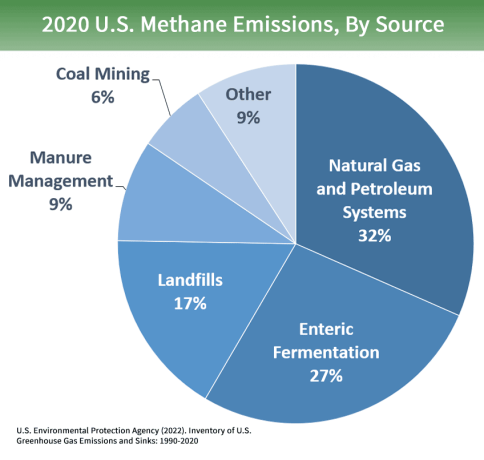My pilot light is always on when it comes to reigniting climate conversations. But these days my fuse is especially short. What blew up for me was the most recent, ridiculous conversation about gas stoves.
There’s so much noise that you may have missed the headlines. But many got fired up when Richard Trumpka Jr. of the U.S. Consumer Product Safety Commission proposed that natural gas stoves are “a hidden hazard” and might be banned as other unsafe products have been. This isn’t news. In 1986 the EPA warned about gas stoves’ harmful effect on indoor air quality, but the gas industry waged a well-funded misinformation campaign to quickly drown out the alarm bells.
Of course, gas stoves are part of the fossil fuel pollution problem that’s contributing to climate change. Natural gas is 90% methane, which is a powerful greenhouse gas at more than 80 times the global warming potential of carbon dioxide in the first 20 years. Natural gas powers indoor appliances like kitchen stoves and water heaters in most homes in Nassau County and a growing number in Suffolk as National Grid continues to push east.
Gas stoves leak methane even when they’re off as our gas pipes and fittings can’t keep this potent greenhouse gas contained. At every point of the natural gas infrastructure, from fracking to pipeline transport to your home, this flighty gas escapes and pollutes not just the atmosphere, but also your indoor air. Yet little data seems to have actually reached the consumer regarding the harmful effects on our health.
In a newly released PSE (Physicians, Scientists, and Engineers) for Healthy Energy study titled “Home is Where the Pipeline Ends,” Ivy League researchers detected the presence of at least 21 hazardous air pollutants, including known carcinogens and neurotoxins. Policy makers and consumers should familiarize themselves with this important study.
It reports that gas appliances aren’t just ob-NOx-ious contributors to climate change, but also causing pollution right now in your home. Upon combustion, not just fine particulate matter but a whole lot of harmful gasses, like nitrogen dioxide and nitric oxide (NOx), carbon monoxide, benzene, toluene, formaldehyde, and other health hazards are blowing right into your face as you cook.
Using a gas stove is like living with an indoor smoker. Of course, proper ventilation while cooking would expel indoor pollution, but how often do you turn it on? Even I am guilty of not using the range hood at maximum exhaust when we gather in the kitchen with family and friends. Instead, I turn the loud fans down or even off, so I can better participate in the conversation or listen to the news. This is why we’re replacing our gas stove with an induction stove. Our home is powered by solar panels, so it makes sense for us to replace gas appliances with clean energy electric ones.
What’s concerning is that millions of Americans don’t have a choice in this matter and many kitchen ventilators do not exhaust the toxic fumes to the outside. Some just draw the fumes into a filter that captures the particulate matter (smoke); the carcinogenic gases remain. When the filter gets dirty even the particulates aren’t contained. It’s estimated that at least half of kitchens aren’t properly ventilated, making it clear the gas stove is a public health hazard. It exposes our children and vulnerable citizens to unhealthy air, risking respiratory problems and neurologic damage.
Decades of studies and peer-reviewed findings warn that gas-burning stoves are causing childhood asthma. A December study claims 18.8% of childhood asthma cases in New York could have been prevented. Experts are calling it “gasthma.” Knowing this, the majority of Long Islanders I’ve spoken with still insist that they’re “cooking with gas!”
The impassioned defense of the gas stove that recently hit the mainstream media is a result of a renewed disinformation campaign that has been waged for decades by well-funded lobbyists serving those who put profits over people. Do you still believe it’s “better” to cook with gas? Or would you rather become part of the climate solution and explore clean, energy efficient, and life-sustaining methods for feeding your family?
I’ve personally been disheartened by the resistance I have met here in Nassau as I replace my gas stove with an induction stove. Even the salesperson advised me against this purchase, warning that the resale value of my home will drop as “everyone wants a gas stove”!
I grew up in Iceland where we power our homes with cleaner energy. We don’t burn natural gas. I assure you that my food cooked with electricity was just as tasty as that cooked here by burning gas. Today’s induction stoves are at least equal and even better in response time for cooking.
If you care to be part of the climate solution, transition away from fossil fuels. Start with cleaning up your home energy source (solar, geothermal). Then replace your gas appliances with electric. Please call your local elected officials and ask them to support the All-Electric Building Act, S562A/A920.
Cities and counties across the United States have already adopted electrification ordinances on new constructions. The power grid doesn’t have to pollute, there’s a better way, and Gov. Kathy Hochul has already set an example for New York State by committing new buildings in New York City to be all-electric starting in 2024.
Thanks to the Inflation Reduction Act, legislation committed to cut greenhouse gas emissions, this year you will be eligible to save thousands of dollars when you buy a heat pump, install solar panels and move away from gas towards energy-efficient household appliances. Savings through tax credits and rebates will help citizens transition without economic stress. If you plan to upgrade your home for clean energy solutions, please visit https://www.energy.gov/scep/home-energy-rebate-programs-frequently-asked-questions
This column was written with the editing assistance of Billii Roberti, of Green Choices Consulting, an energy efficiency and renewable energy consultant.

